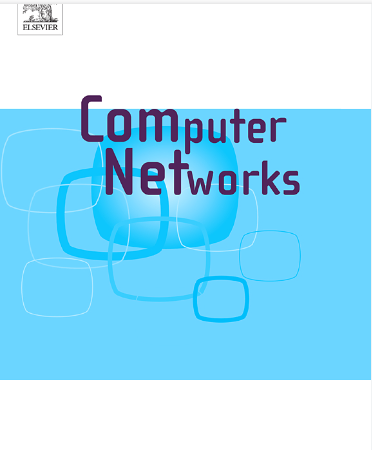Delay-aware multi-stage edge server placement and task offloading with budget constraint
IF 4.4
2区 计算机科学
Q1 COMPUTER SCIENCE, HARDWARE & ARCHITECTURE
引用次数: 0
Abstract
This paper introduces a novel network planning problem called Multi-stage Edge Server Deployment (M-ESD). The problem calls for a solution that (i) adds fixed edge servers to an existing Multi-access Edge Computing (MEC) network incrementally over multiple stages, e.g., in years, and (ii) optimizes the offloading of tasks to installed servers. More specifically, when upgrading a network, at each stage, the problem involves the following constraints: (i) budget (in $), (ii) server deployment cost (in $) and cost depreciation rate (in %), (iii) number of tasks and their increase rate (in %), and (iv) server storage capacity. The goal of M-ESD is to ensure the resulting network maximizes the average number of tasks that meet their delay requirement. This paper presents a Mixed Integer Linear Programming (MILP) model and a heuristic approach called M-ESD/H to solve the M-ESD problem. Simulation results on small networks show that M-ESD/H produces results that are within 13.6% of the optimal MILP solution. Further, it significantly reduces runtime and produces results in less than 0.1 s as compared to MILP, which failed to produce results in some networks after running for over 48 h. For large networks, M-ESD/H is compared against two versions of M-ESD that consider arbitrary budget allocation and/or edge server placement, i.e., M-ESD/A1 and M-ESD/A2. The results show that M-ESD/H outperforms both M-ESD/A1 and M-ESD/A2 across various options with varying numbers of stages, budget allocation, and tasks.
具有预算约束的延迟感知多阶段边缘服务器放置和任务卸载
本文介绍了一种新的网络规划问题——多级边缘服务器部署(M-ESD)。这个问题需要一种解决方案:(i)在多个阶段(例如,以年为单位)逐步将固定边缘服务器添加到现有的多访问边缘计算(MEC)网络中;(ii)优化将任务卸载到已安装的服务器上。更具体地说,当升级网络时,在每个阶段,问题涉及以下约束:(i)预算(以美元为单位),(ii)服务器部署成本(以美元为单位)和成本折旧率(以%为单位),(iii)任务数量及其增长率(以%为单位),以及(iv)服务器存储容量。M-ESD的目标是确保最终网络中满足延迟要求的任务的平均数量最大化。本文提出了一种混合整数线性规划(MILP)模型和一种称为M-ESD/H的启发式方法来解决M-ESD问题。在小型网络上的仿真结果表明,M-ESD/H产生的结果在最优MILP解决方案的13.6%以内。此外,与MILP相比,它显著缩短了运行时间,并在不到0.1 s的时间内产生结果,MILP在一些网络中运行超过48小时后无法产生结果。对于大型网络,M-ESD/ h与考虑任意预算分配和/或边缘服务器放置的两个版本M-ESD进行了比较,即M-ESD/A1和M-ESD/A2。结果表明,在不同阶段数量、预算分配和任务的情况下,M-ESD/H方案的性能优于M-ESD/A1和M-ESD/A2。
本文章由计算机程序翻译,如有差异,请以英文原文为准。
求助全文
约1分钟内获得全文
求助全文
来源期刊

Computer Networks
工程技术-电信学
CiteScore
10.80
自引率
3.60%
发文量
434
审稿时长
8.6 months
期刊介绍:
Computer Networks is an international, archival journal providing a publication vehicle for complete coverage of all topics of interest to those involved in the computer communications networking area. The audience includes researchers, managers and operators of networks as well as designers and implementors. The Editorial Board will consider any material for publication that is of interest to those groups.
 求助内容:
求助内容: 应助结果提醒方式:
应助结果提醒方式:


